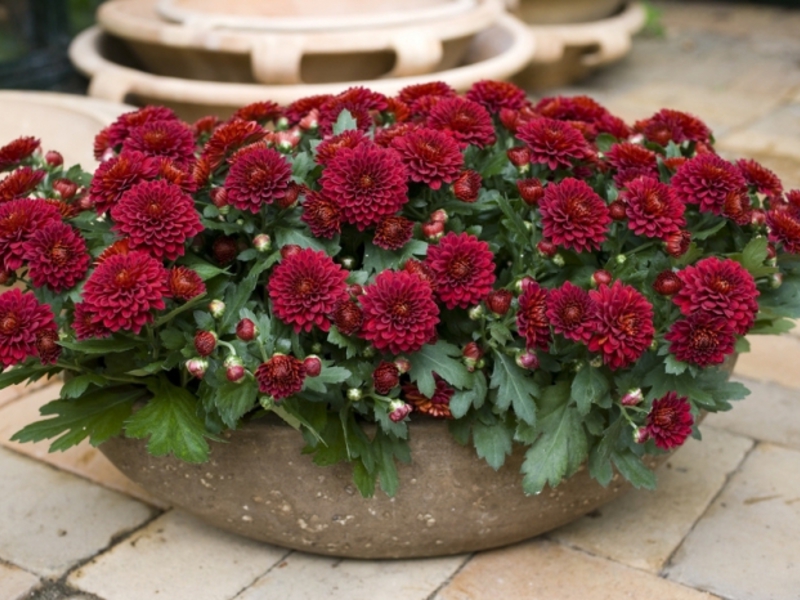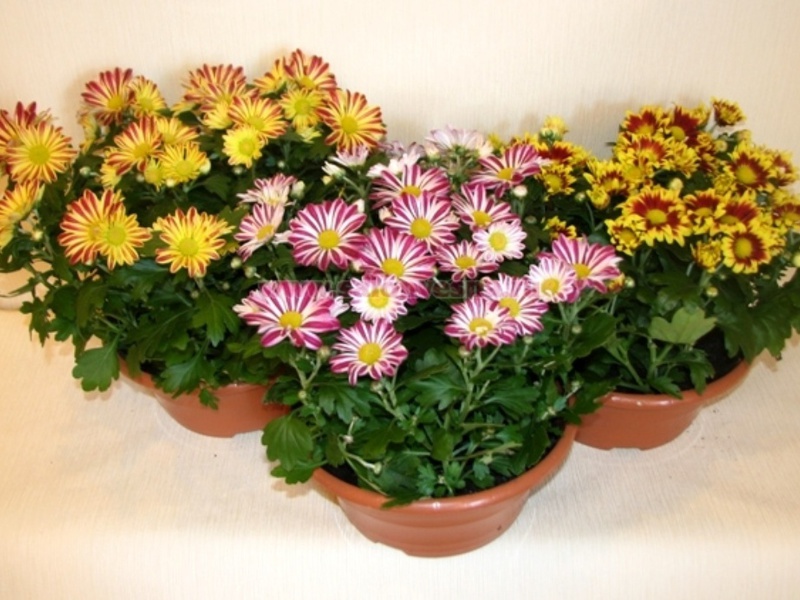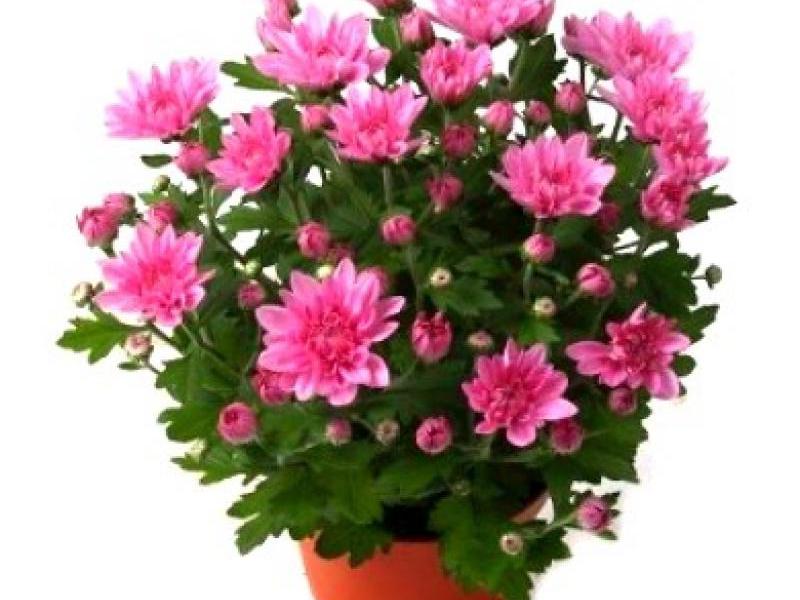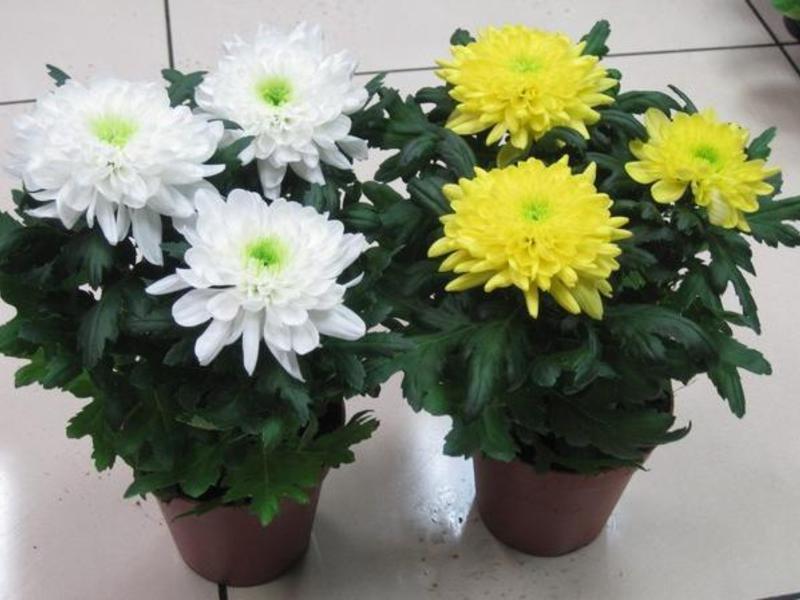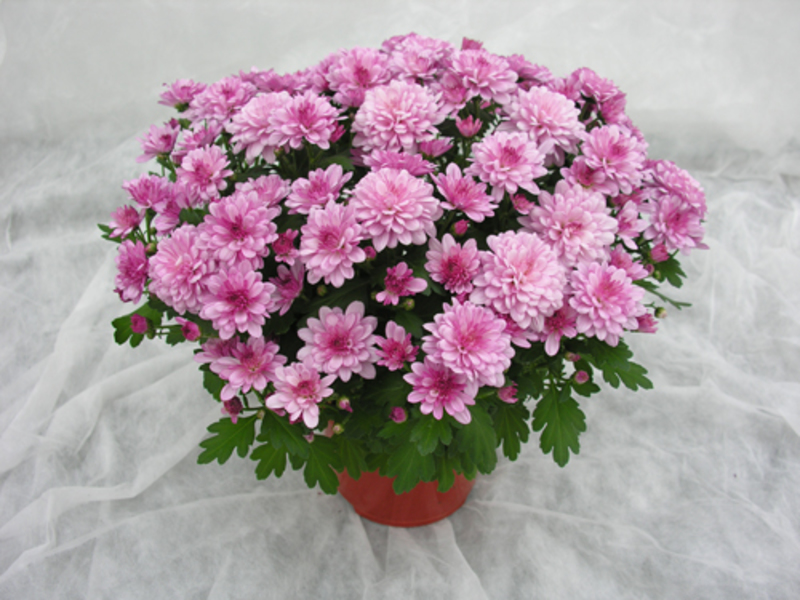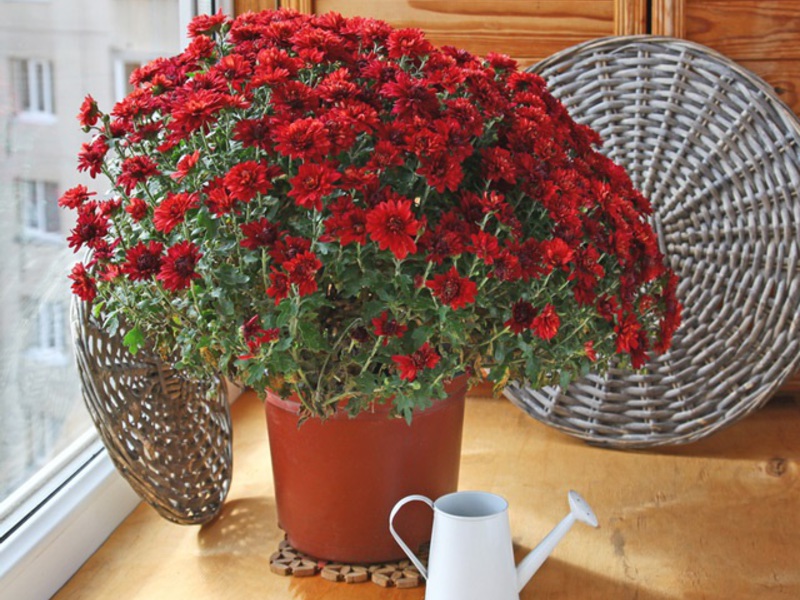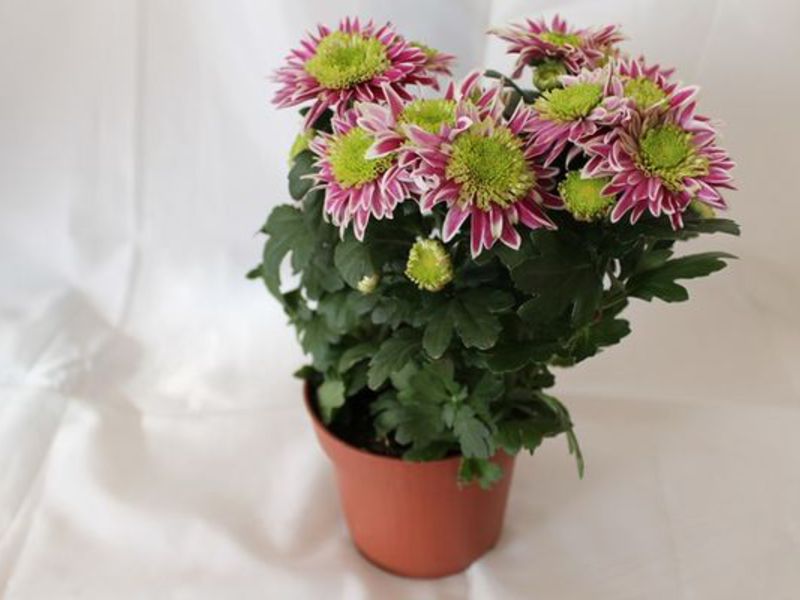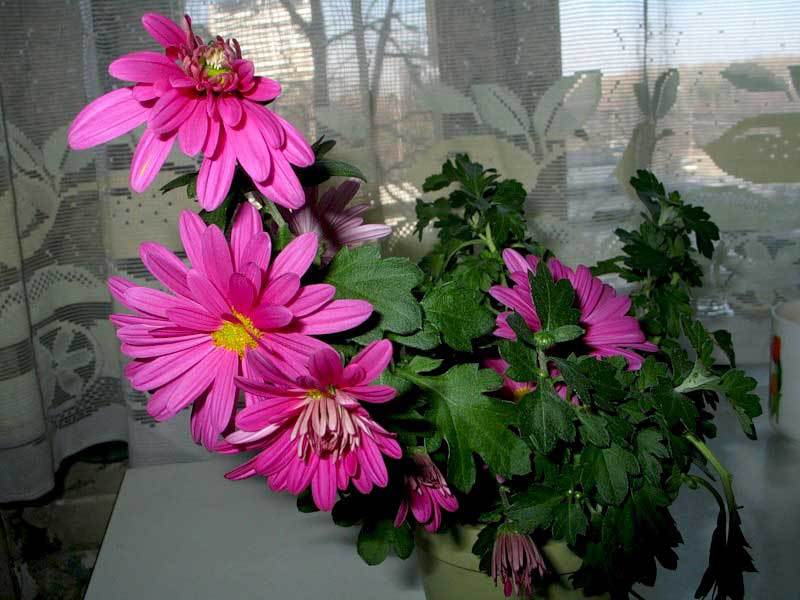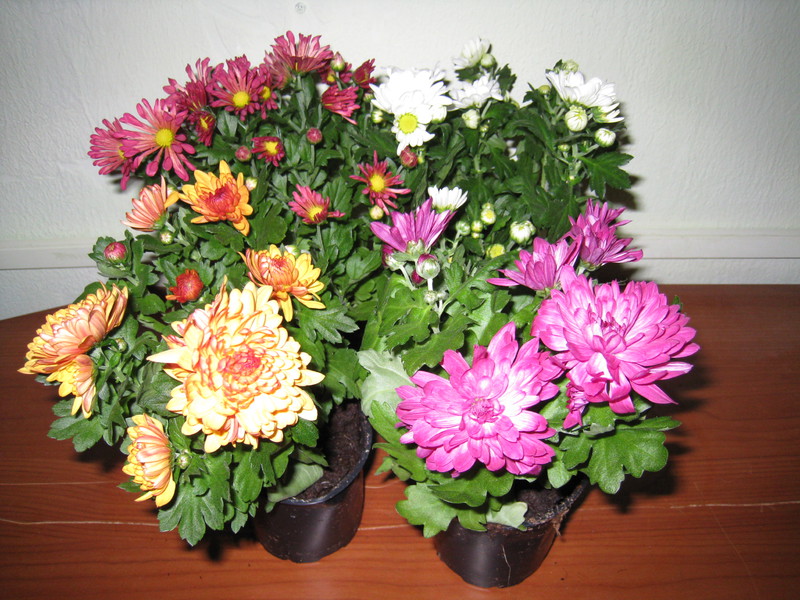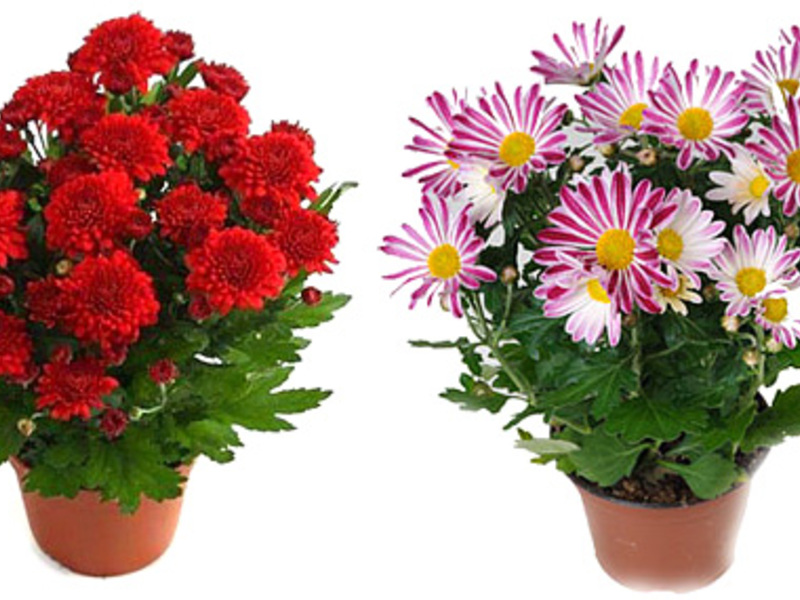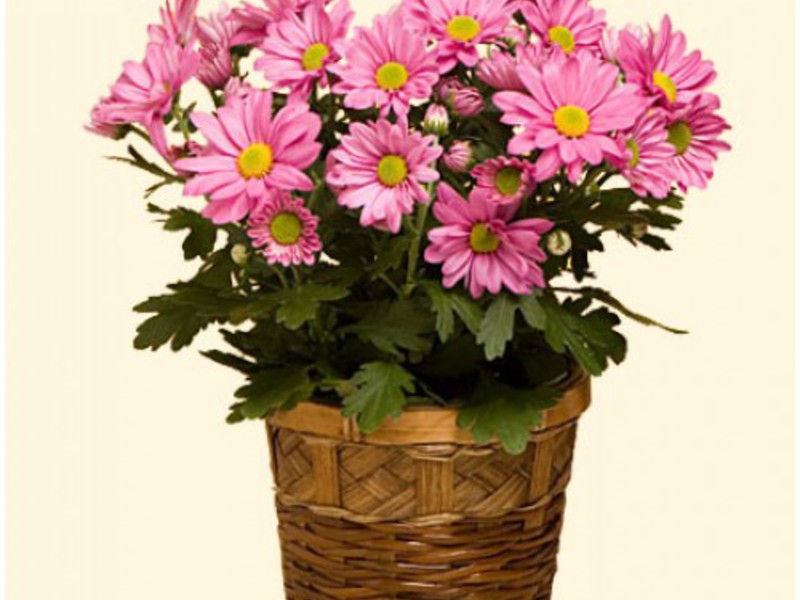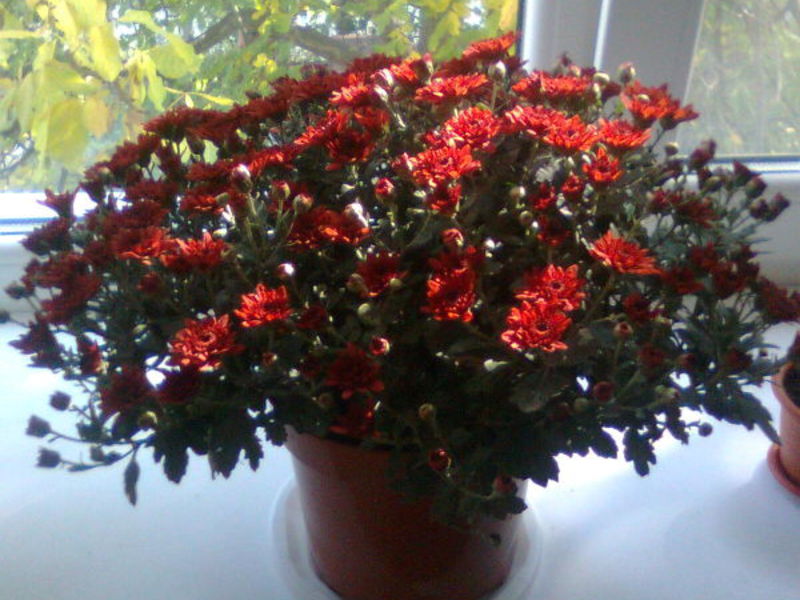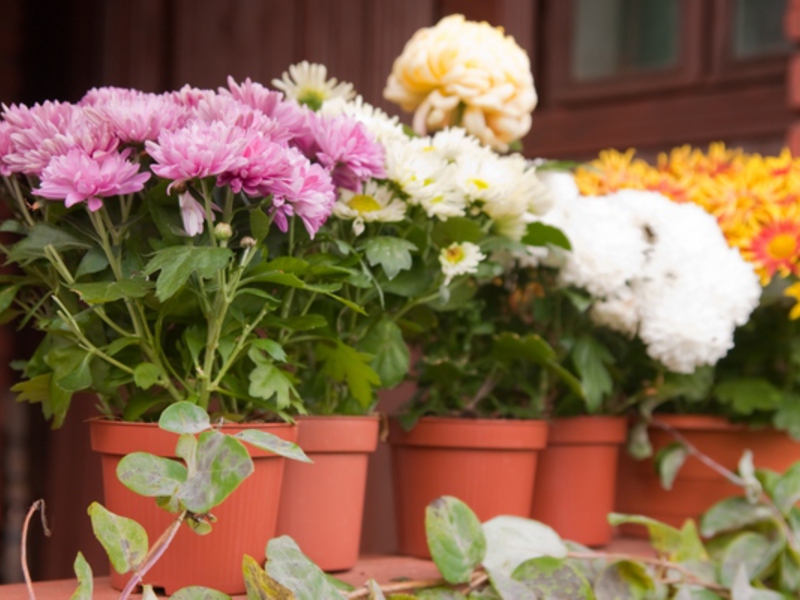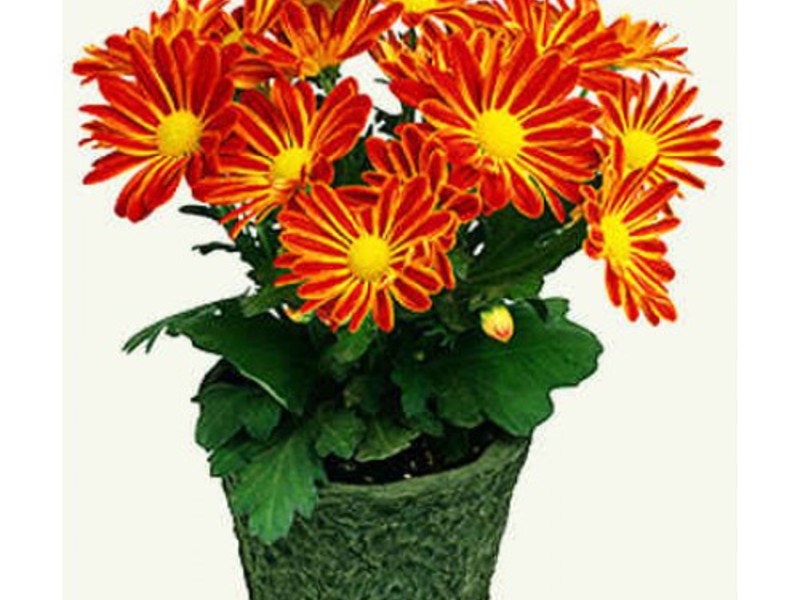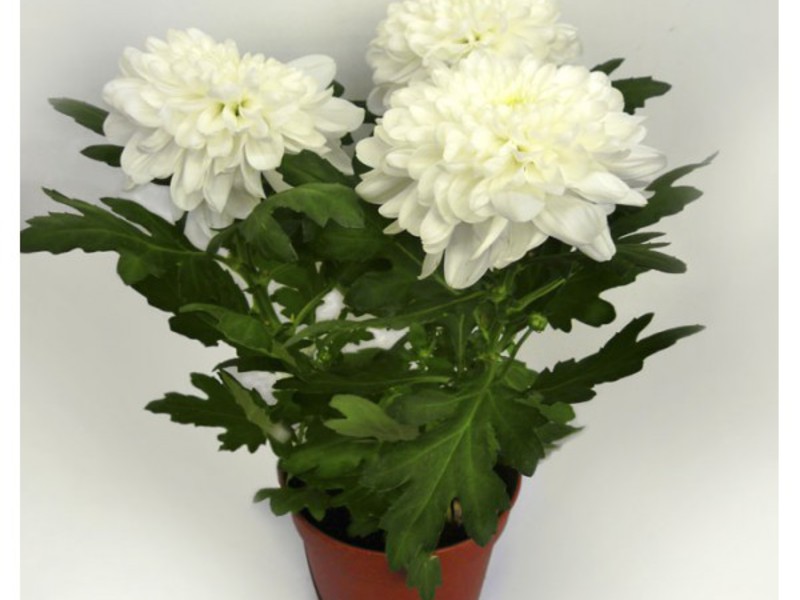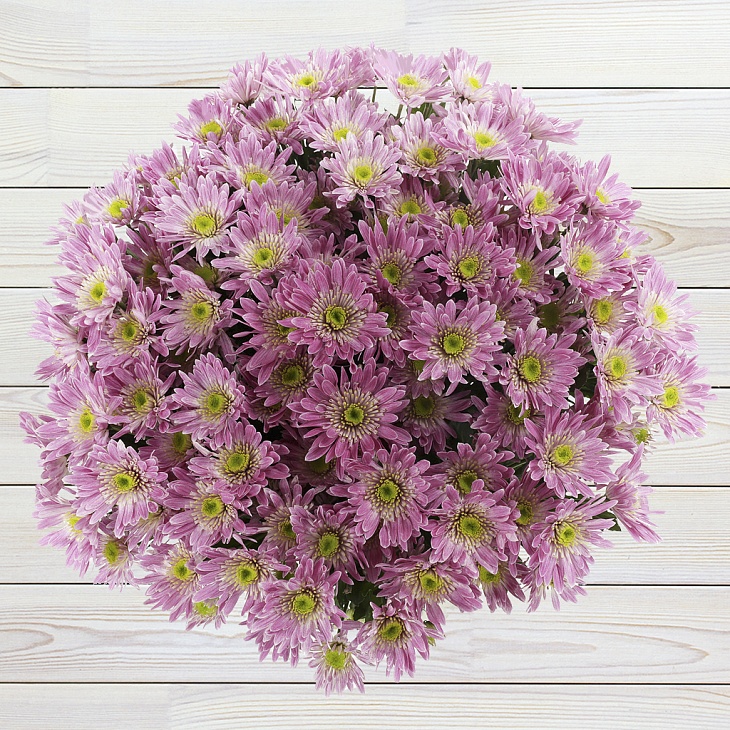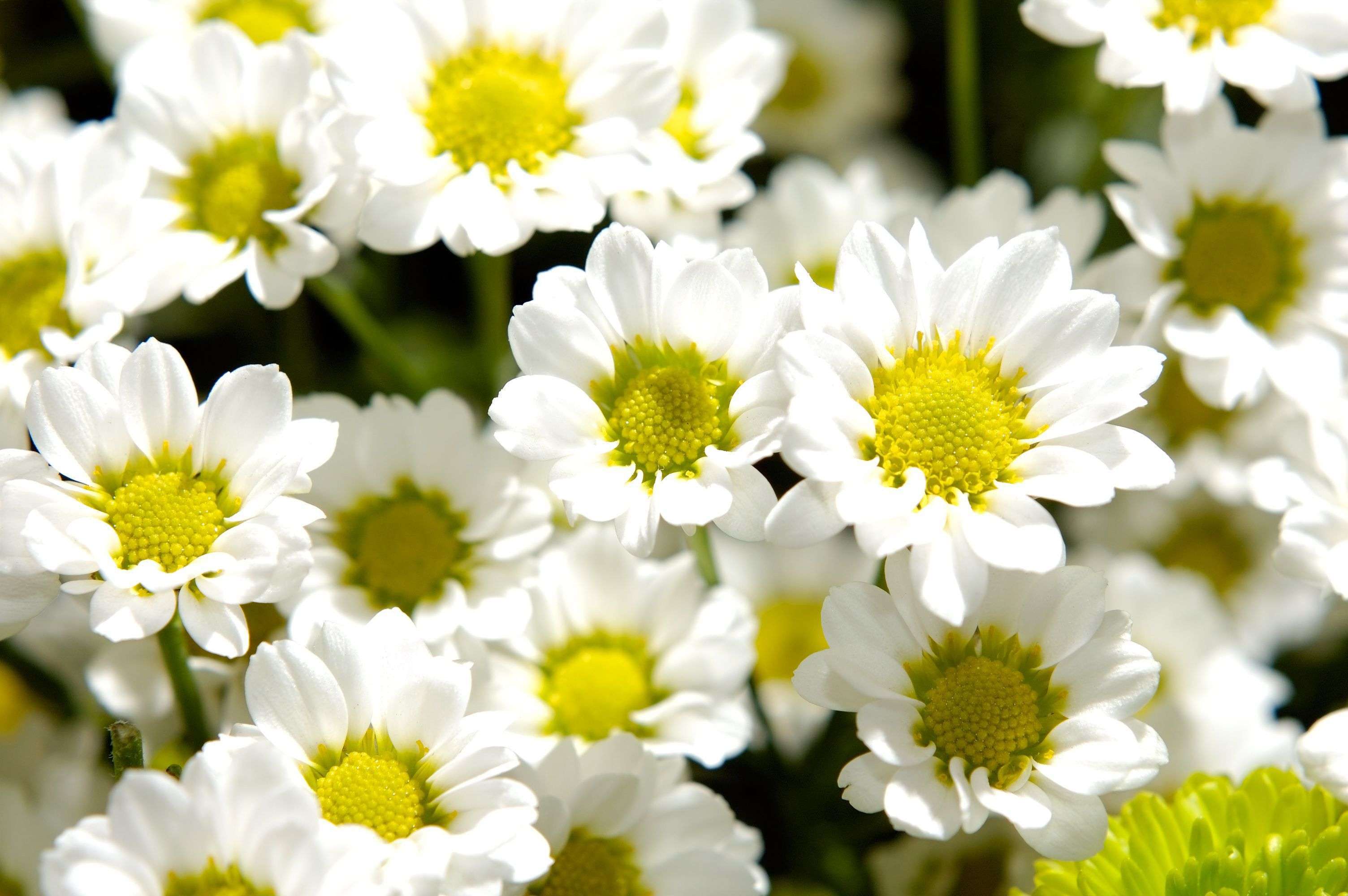 Many growers are very fond of such a flower as chrysanthemum. It is popular and can grow both outdoors and at home. In the latter case, a pot is used to grow a flower. Caring for it both indoors and outdoors will be exactly the same, only unlike garden flowers, the indoor flower is small in size. So how to care for him in a pot? Let's try to figure it out.
Many growers are very fond of such a flower as chrysanthemum. It is popular and can grow both outdoors and at home. In the latter case, a pot is used to grow a flower. Caring for it both indoors and outdoors will be exactly the same, only unlike garden flowers, the indoor flower is small in size. So how to care for him in a pot? Let's try to figure it out.
Features of indoor chrysanthemums
This flower can be either annual or perennial. It has a branched root system, which develops parallel to the surface. The leaves of the plant are light green, there are dissected, serrated or notched... A dense inflorescence is formed by small flowers collected in a basket.
Indoor chrysanthemum has a large number of varieties that grow wonderfully at home. Such species differ from garden ones in their miniature size. This is explained by the fact that for growing indoors, drugs are used that stop their growth for decorative purposes.
When purchasing a flower for growing in pots, choose a strong and healthy specimen with a well-formed stem and dense foliage. After the purchase, the plant adapts for some time to new conditions. To prevent it from contracting diseases from other indoor inhabitants, it is quarantined for several days.
Care
Temperature and lighting
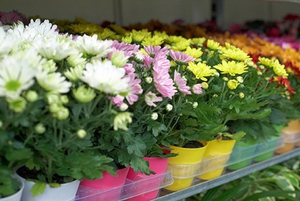 In order for the plant to grow well at home, it is necessary to provide itoptimal temperature conditions... She does not tolerate heat and direct sunlight. The best conditions are cool air and short daylight hours. In order for the chrysanthemum to bloom as long as possible, the optimum temperature for this should be +15 degrees, and the maximum temperature for its growth is within +18 degrees.
In order for the plant to grow well at home, it is necessary to provide itoptimal temperature conditions... She does not tolerate heat and direct sunlight. The best conditions are cool air and short daylight hours. In order for the chrysanthemum to bloom as long as possible, the optimum temperature for this should be +15 degrees, and the maximum temperature for its growth is within +18 degrees.
Its increase leads to the fact that the leaves of the plant begin to turn yellow and flower buds dry out. This is especially true for recently purchased copies. To prevent this from happening, you need to properly care for the flower.
Moisture
Indoor chrysanthemum, the care of which is not too difficult, prefers high air humidity... If the earthen clod dries up, this can lead to drying out of the root system. To keep constant humidity in the room, it is recommended to spray the plant as often as possible. A home flower must be watered abundantly, but in such a way that there is no stagnation of moisture in the pot. During active growth, it should be watered 2-3 times a week so that the soil is constantly moistened.
Top dressing
Plant care at home includes fertilization... A chrysanthemum in a pot quickly takes away the necessary nutrients from the soil, so it should be regularly fed for full growth and abundant flowering. For this, mineral fertilizers are used, for example, a monophosphate solution of potassium, since a lack of potassium and phosphorus leads to late flowering. You can also add other multi-component additives containing:
- nitrogen;
- potassium;
- phosphorus.
During the growing season, mature plants should be fed with liquid organic matter every 10 days. If the flower grows in poor soil, then feeding is carried out every four days with a solution of a mullein in a ratio of 1:10. This must be done before the plant begins to bloom. To prevent an unpleasant odor from feeding in the apartment, the pot should be taken out to the balcony for one or two days in a shaded place.
Transfer
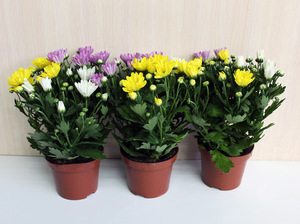 Indoor chrysanthemum growing at home must be transplanted. Young plants undergo this procedure every year, adults - after a year. Such a flower does not grow well in acidic soil, so it is recommended to plant it in garden soil, in which add peat and sand.
Indoor chrysanthemum growing at home must be transplanted. Young plants undergo this procedure every year, adults - after a year. Such a flower does not grow well in acidic soil, so it is recommended to plant it in garden soil, in which add peat and sand.
The transplant is carried out by transferring an earthen lump into a larger container. To make the flowering more abundant, a small amount of bird droppings is introduced into the soil. For prevention purposes, the soil is disinfected by pouring boiling water over it. Once it is dry, the flower can be repotted.
Reproduction
Many growers mistakenly consider a home-grown chrysanthemum to be an annual plant and discard it after flowering. But this is a big mistake, since the plant can be preserved and subsequently propagated.
This is done in three ways:
- cuttings;
- dividing the bush;
- using seeds.
The first two methods are the simplest and most successful. Planting this flower is a fairly simple process. Many growers plant several cuttings in one pot, resulting in abundant flowering.
Pruning
It is recommended to prune the flower every year. Such a procedure is carried out after it has faded. In winter, during the dormant period, it is placed in a cool place, for example, in a cellar. In the spring, the chrysanthemum begins to sprout young shoots, so it should transplant into new soil... For adult plants, this procedure is not considered mandatory. Collect cuttings for planting in spring, as soon as the flower gets stronger.
Diseases and pests
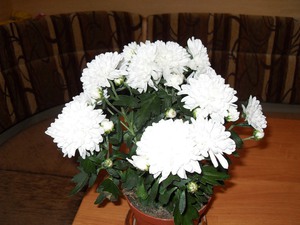 The main care is to combat the following pests and diseases:
The main care is to combat the following pests and diseases:
- spider mite;
- powdery mildewand;
- gray rot;
- septoria.
The spider mite is the most likely to infect the plant. This is evidenced by the appearance of a white spider web. To get rid of this pest, the following measures are taken: the leaves of the flower are wiped with a cloth, which is moistened in soapy water. Also, affected chrysanthemums are treated with drugs such as "Pyrethrum" and "Actellic".
Gray bloom on the peduncles and foliage indicates the appearance of powdery mildew. It usually occurs due to increased air humidity. Such plants should be sprayed with a fungicide and placed in a dry place.
Gray rot is characterized by the appearance of brown spots on the leaves. In this case, the flower is treated with a foundation, after which it is taken out in the sun and well ventilated.
If the plant has been affected by septoria, then in this case it is covered with a brown spot with a yellow edging. The flower is treated with a foundation and the amount of watering is reduced.
Useful Tips
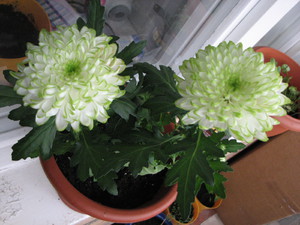 For lack of pomp, a flowertrim and pinch... This procedure is carried out throughout the entire growth period. If you don't, the plant will have a long, unsightly stem.
For lack of pomp, a flowertrim and pinch... This procedure is carried out throughout the entire growth period. If you don't, the plant will have a long, unsightly stem.
To extend the flowering period, it is necessary to remove dried leaves and flower buds from time to time. On hot days, the flower is placed in a cool place.
Many gardeners prefer to plant the plant outdoors before fall. It is returned to the pot for the winter.
Thus, it is not so difficult to care for a chrysanthemum. Growing it in a pot, you should adhere to certain rules and timely get rid of pests and diseases. Only in this case will the flower grow healthy and strong, delighting its owner with abundant flowering.
